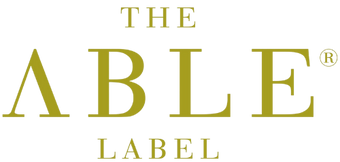WORLD OSTEOPOROSIS DAY 2015
Spreading Awareness for World Osteoporosis Day 2015
Today is World Osteoporosis Day, and at The Able Label, we feel it’s important to raise awareness and support organisations helping the very people that our products were designed to benefit.
Please help us spread this information, to let people know what Osteoporosis is, how it affects people and what Osteoporosis Day is about.
The key theme for this year is a call to us all - the majority of people not getting the recommended daily allowance of calcium, vitamin D and protein.
What is Osteoporosis?
Bone health begins in the womb so good nutrition is key to strong bones throughout life. As a child, bones grow and repair very quickly however this process slows, as you get older.
Osteoporosis is a fairly common condition, which weakens bones making them fragile and more likely to break. It affects around 3 million people in the UK, with the most common types of breaks that can affect people being wrist, hip and vertebrae fractures.
What is Osteoporosis Day?
World Osteoporosis Day takes place on 20th October every year and is organised by the International Osteoporosis Foundation (IOF). It aims to raise global awareness of the diagnosis, treatment and prevention of osteoporosis and metabolic bone disease.
Osteoporosis Day 2015
Nutrition across all ages is the theme this year with the majority of people not getting the recommended daily allowance of calcium, vitamin D and protein. These are all crucial to bone health.
The big 3: key nutrients for building stronger bones:
1.) Calcium
- Vital for strong bones and is a major building block of our skeleton.
- Essential for healthy nerve and muscle function.
- Your body will take calcium from bones and weaken them if you do not supply your body with the amount it needs.
- Calcium is most commonly available through milk and other dairy foods.
- For those who are unable to eat dairy products, other food sources include green vegetables like broccoli and curly kale; whole canned fish; nuts and tofu.
2.) Vitamin D
- Key in helping the body to absorb calcium from the intestines and ensuring the correct renewal and mineralisation of bone.
- Risk of falls reduced as muscle strength and balance improved
- UV-B rays in sunlight can make this in the skin.
- It is recommended that individuals should try to get 10-20 minutes of sun exposure to bare skin outside peak sunlight hours daily without sun cream (taking care not to burn).
- Oily fish; egg yolk and liver are also sources of vitamin D.
- Vitamin D deficiency can cause rickets and lead to ‘softening’ of the bones.
3.) Protein
- Essential amino acids, which support bone building, are provided to the body by protein.
- Skeletal growth can be affected as well as the preservation of bone mass with ageing due to insufficient protein.
- Reduced muscle mass and strength can come from lack of protein leading to increased risk of falls.
- Protein supplements can help reduce post-fracture bone loss, medical complications and rehabilitation stay in hospital of hip fracture patients.
Old Age and Osteoporosis – sustain mobility and independence
Preventative measures including a healthy diet will lower the risk of osteoporosis-related fractures. Calcium levels can lower as you age as consumption may be reduced with decreased appetite or illness; decreased absorption into the intestines and decreased calcium retention by the kidneys. Levels of vitamin D may be lower due to reduced sunlight exposure being housebound; decreased function of the skin to take in vitamin D.
Dietary protein is needed to maintain physical function in older people. It has also been seen to reduce risk of complications and rehabilitation time of those with hip fractures. Those aged over 50 who have suffered a fall from standing height or less should be tested for osteoporosis.
If you would like to know more about World Osteoporosis Day, take a look at the official website: http://www.worldosteoporosisday.org.





